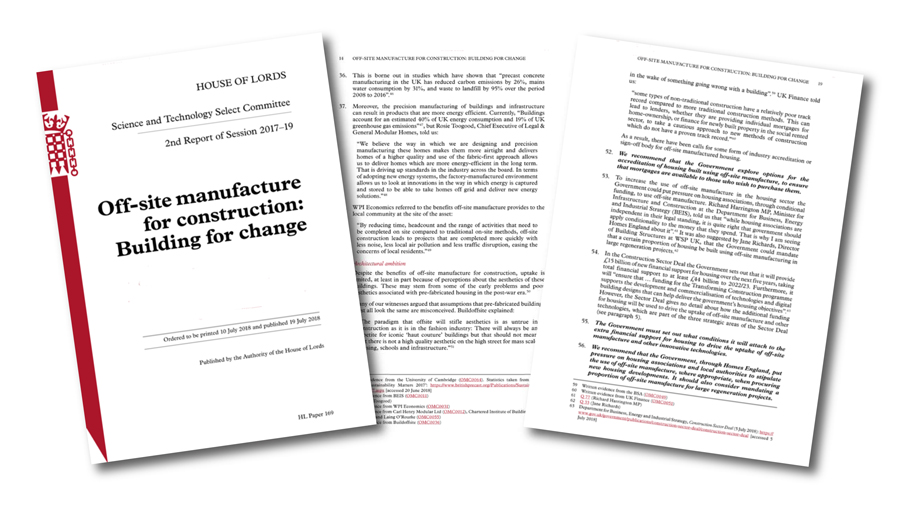
Off-site manufacture can help increase construction sector productivity, reduce labour demands and increase build quality, says the House of Lords Science and Technology Committee in its new report.
The construction sector as it currently operates cannot meet the UK’s need for housing and may struggle to meet the need for infrastructure. Given that the UK already lags behind other countries in construction productivity, and is facing a labour shortage, the Government and the construction sector must urgently find solutions.
In a new report, Off-site Manufacture for construction: building for change, the House of Lords Science and Technology Committee says that off-site manufacture (OSM) can help to increase productivity in the construction sector while reducing labour demands, improving the quality and efficiency of buildings, and reducing the environmental impacts associated with traditional construction.
However, take up of OSM is varied and somewhat limited across the sector because it is working with out-dated and unsustainable business models that are not conducive to OSM for construction. OSM requires collaboration between clients, designers and contractors from an early stage but much of the evidence the Committee received painted a picture of a construction sector that is fragmented and lacking in trust. These barriers must be addressed by the sector itself and strong leadership is needed from the Construction Leadership Council.
While OSM could lessen the labour shortage, the different skills required for manufacturing are currently lacking in the UK labour market and must be developed. OSM will require a combination of skills involving site implementation, digital and procurement. The Government must therefore ensure that young people entering the workplace are equipped with the digital skills needed for modern methods of construction, including off-site manufacture.
The Government’s Construction Sector Deal and its stated ‘presumption in favour’ of OSM, have shown a strong commitment to investing in this area and the Committee welcomes many of the initiatives. The Committee recommends that the Government develop and publish a series of Key Performance Indicators against which the success of the ‘presumption in favour’ can be assessed. Where the presumption in favour is set aside and a project goes ahead that does not use off-site manufacture, the Government should publish a statement explaining why it has not been used and justifying that decision.
In many cases, OSM is suitable for the construction of important social infrastructure such as hospitals and houses. The Committee heard evidence that if the Government is to achieve its aim of building 300,000 houses a year by 2020, OSM would be the only way to meet this target, and that traditional construction methods do not have the capacity to build enough homes. The Government must set out what conditions it will attach to the extra financial support for housing to drive the uptake of off-site manufacture and other innovative technologies.
Chairman of the Committee, Lord Patel said: “There are clear and tangible benefits from off-site manufacture for construction which make a compelling case for its widespread use. We heard evidence that OSM could increase productivity in the sector by up to 70%.
“The construction sector’s business models are no longer appropriate and are not supporting the UK’s urgent need for new homes and infrastructure. The construction sector needs to build more trust and create partnerships so that companies can work together to improve the uptake of off-site manufacture, and the Construction Leadership Council should provide the necessary leadership.
“The role of the Government and the wider public sector is pivotal in a move to greater use of off-site manufacture. The report sets out actions that the Committee thinks the Government should take including implementation of the Construction Sector Deal, committed execution of the ‘presumption in favour’ of off-site manufacture and a greater move to procuring for whole-life value rather than lowest cost.”
The report is available to download here.








